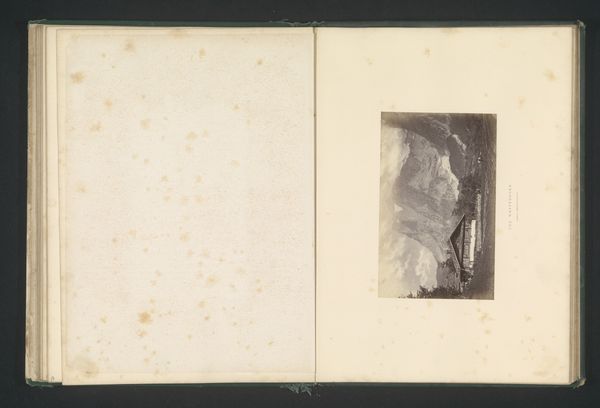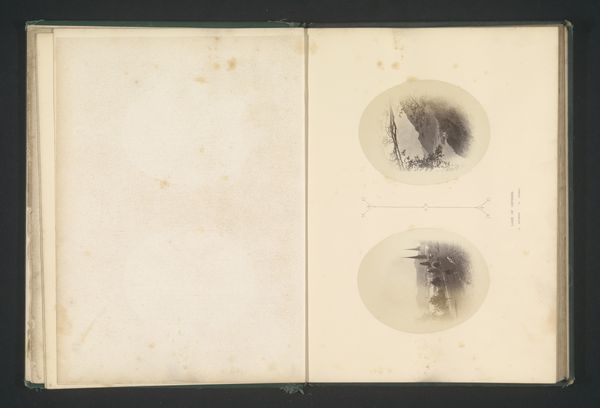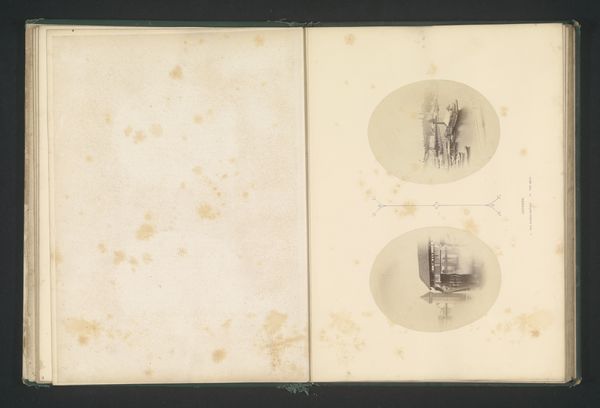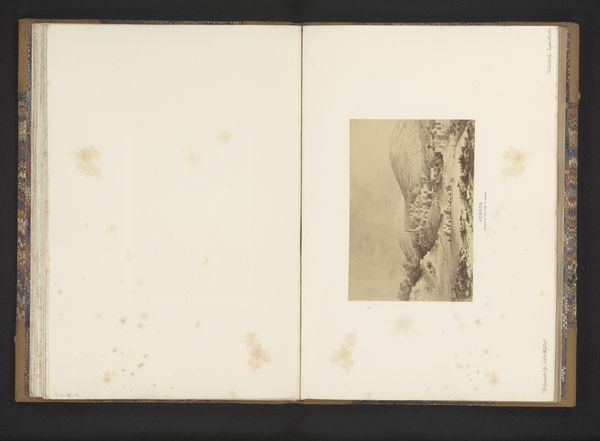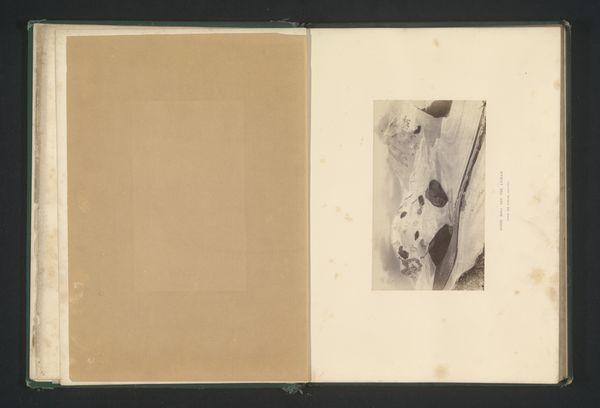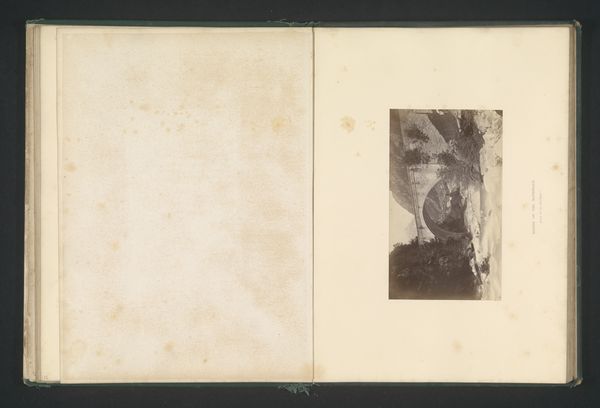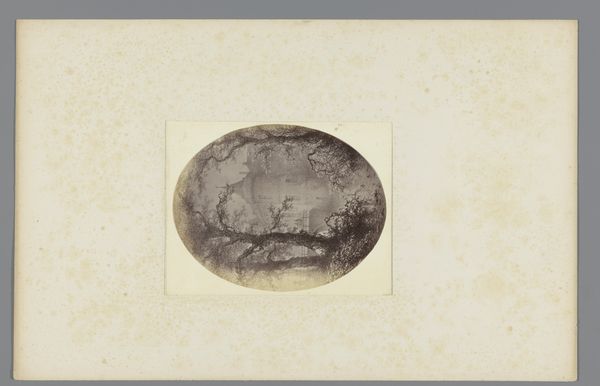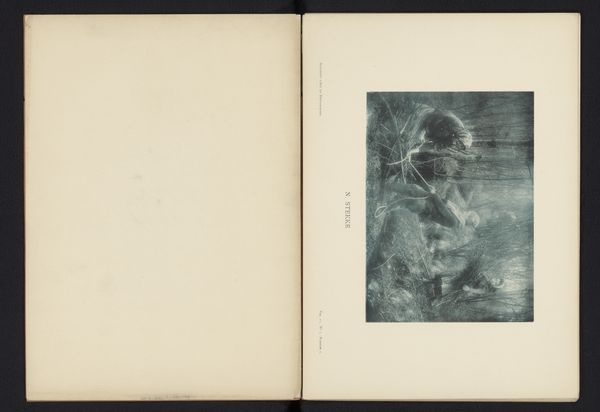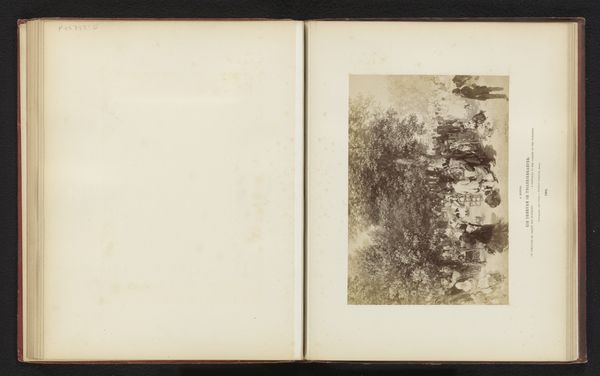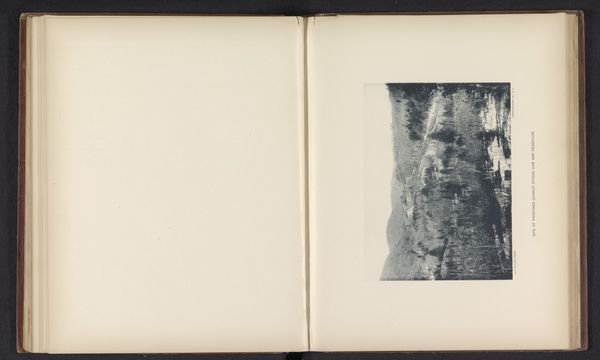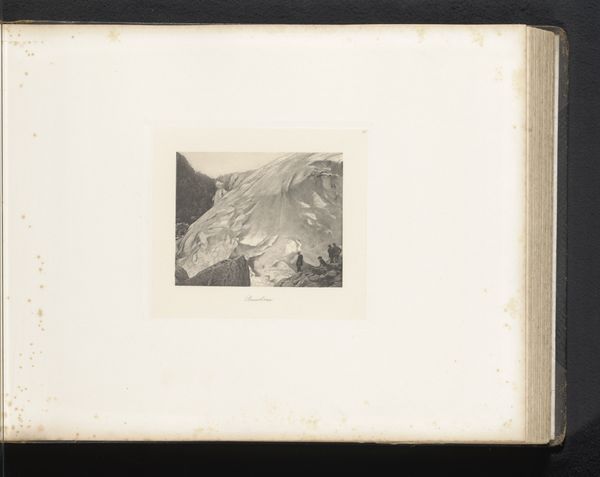
#
aged paper
#
homemade paper
#
light coloured
#
hand drawn type
#
river
#
hand-drawn typeface
#
fading type
#
thick font
#
white font
#
watercolor
#
historical font
Dimensions: height 120 mm, width 83 mm
Copyright: Rijks Museum: Open Domain
Editor: This is "Gezicht op de kloof en de bron van thermale baden van Pfeffers," made before 1868. It seems to be part of an album, showing two mounted landscape photographs. There's something about the muted tones and the aged paper that evokes a feeling of distance, both in time and place. How do you interpret this work, especially within its historical context? Curator: That sense of distance is crucial. These images, depicting the thermal baths of Pfeffers, weren’t just records of a place; they were commodities consumed by a growing tourist industry that actively shaped perceptions of nature and wellness. How does this album reflect the power dynamics inherent in such consumption? Consider who had access to these spas and, by extension, these images. Editor: I see what you mean. It wasn’t a universally accessible experience. Curator: Precisely. The picturesque scenery presented here is divorced from the labor and the social realities that sustained it. Who do you think *didn't* get to see this view or experience its supposed benefits? Whose stories are silenced by this selective framing of leisure and escape? Think about issues of class and privilege. Editor: It's unsettling to realize how an image can perpetuate a narrative that benefits some while marginalizing others. I hadn’t considered the socioeconomic implications of spa tourism back then. Curator: These early photographs were instruments in shaping narratives around health, nature, and class. They offer us a glimpse into the historical construction of privilege and the power of images to exclude. Looking at these spa images, one must actively interrogate the underlying social stratification to reveal what these views conceal. Editor: I guess looking at historical images like this involves unearthing those hidden narratives and thinking about who is included, but especially who is left out of the frame. Thanks! Curator: Indeed. Every image contains a history, not just of what it depicts, but of the conditions of its creation and consumption. Let's keep asking, who benefits?
Comments
No comments
Be the first to comment and join the conversation on the ultimate creative platform.
